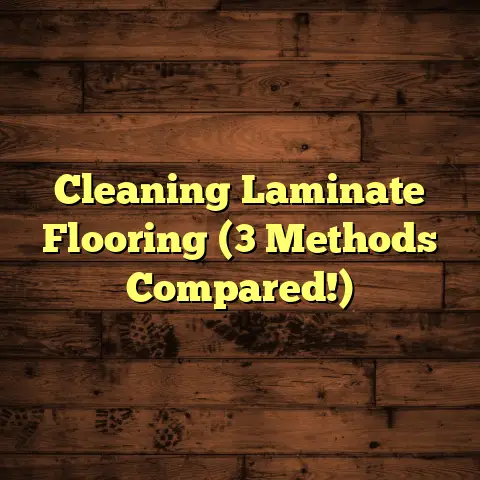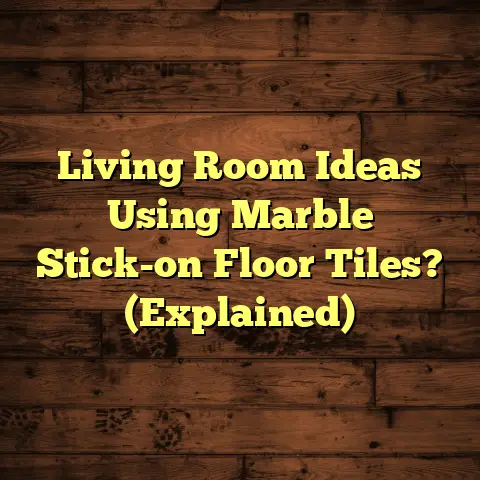Cost to Refinish Hardwood Floor in Egypt
Refinishing hardwood floors can breathe new life into a home, enhancing its aesthetic appeal and increasing its value. However, understanding the costs involved in refinishing hardwood floors in Egypt is crucial for homeowners looking to undertake this project. This article will provide a comprehensive overview of the various cost factors, materials, and considerations associated with hardwood floor refinishing.
Understanding Hardwood Floor Refinishing
Refinishing hardwood floors involves sanding down the top layer of the wood to remove imperfections, followed by applying stains or finishes to enhance its appearance and protect it from damage. Refinishing is an excellent choice for homeowners looking to restore the beauty of their hardwood floors without the expense of replacement.
Benefits of Refinishing Hardwood Floors
- Aesthetic Improvement: Refinishing can greatly enhance the visual appeal of your home.
- Cost-Effectiveness: Compared to replacing hardwood floors, refinishing is often significantly less expensive.
- Increased Home Value: Well-maintained hardwood floors can increase your home’s market value.
- Durability: Refinishing can extend the life of your hardwood floors for many years.
Major Cost Factors Impacting Hardwood Floor Refinishing
When estimating the cost to refinish hardwood floors, several key factors come into play:
1. Area Size
The total square footage of the area being refinished is one of the most significant cost determinants. Larger areas require more materials and labor, leading to higher costs. For example, refinishing a small room of 10 square meters will be less expensive than a larger room of 40 square meters.
2. Hardwood Type
Different types of hardwood vary in price and quality. Common hardwoods used in flooring include:
- Oak: Known for its durability and affordability, oak is a popular choice for flooring in Egypt.
- Maple: Harder than oak, maple is often used for its fine grain and light color, but it tends to be more expensive.
- Teak: An exotic hardwood with a rich color and high oil content, teak is durable but can be costly.
3. Labor Costs
Labor rates can vary based on the contractor’s experience and location within Egypt. Skilled labor may demand a higher price but can ensure better results. On average, labor costs for refinishing hardwood floors can range from EGP 100 to EGP 300 per square meter.
4. Additional Considerations
Several additional factors can influence the overall cost:
- Floor Removal: If existing flooring needs to be removed, this will add to overall costs. The cost for removal can range from EGP 20 to EGP 50 per square meter.
- Subfloor Replacement: If the subfloor is damaged, it may require replacement, adding approximately EGP 50 to EGP 150 per square meter.
- Material Grade: Higher-grade materials usually cost more but offer better durability and aesthetics.
- Room Size/Layout: Complex layouts may require more labor, affecting costs. For instance, rooms with many corners or irregular shapes may take longer to refinish.
- Installation Type: The method chosen for refinishing—whether sanding and finishing or a simpler buff and coat method—can greatly influence pricing.
Detailed Cost Breakdown
Average Cost Estimates
Here’s a breakdown of the average costs involved in refinishing hardwood floors in Egypt:
| Cost Factor | Price Range (EGP) |
|---|---|
| Labor (per sq. m) | 100 – 300 |
| Sanding & Finishing | 50 – 150 |
| Material (stain, finish) | 20 – 80 |
| Subfloor replacement (if needed) | 50 – 150 |
| Total (for an average room size of 20 sq. m) | 2,500 – 5,000 |
Price Ranges for Different Project Sizes
- Small Room (10 sq. m): Approximately EGP 1,250 – 2,500
- Medium Room (20 sq. m): Approximately EGP 2,500 – 5,000
- Large Room (40 sq. m): Approximately EGP 5,000 – 10,000
Example Scenarios
To illustrate these costs further, let’s consider some scenarios based on typical room sizes:
Scenario 1: Small Living Room (10 sq. m)
For a small living room measuring 10 square meters:
- Labor: EGP 100 – 300 x 10 = EGP 1,000 – 3,000
- Sanding & Finishing: EGP 50 – 150 x 10 = EGP 500 – 1,500
- Materials: EGP 20 – 80 x 10 = EGP 200 – 800
Total Estimated Cost: EGP 1,700 – 5,300
Scenario 2: Medium Bedroom (20 sq. m)
For a medium bedroom measuring 20 square meters:
- Labor: EGP 100 – 300 x 20 = EGP 2,000 – 6,000
- Sanding & Finishing: EGP 50 – 150 x 20 = EGP 1,000 – 3,000
- Materials: EGP 20 – 80 x 20 = EGP 400 – 1,600
Total Estimated Cost: EGP 3,400 – 10,600
Scenario 3: Large Family Room (40 sq. m)
For a large family room measuring 40 square meters:
- Labor: EGP 100 – 300 x 40 = EGP 4,000 – 12,000
- Sanding & Finishing: EGP 50 – 150 x 40 = EGP 2,000 – 6,000
- Materials: EGP 20 – 80 x 40 = EGP 800 – 3,200
Total Estimated Cost: EGP 6,800 – 21,200
Comparison with Alternative Flooring Options
When considering refinishing hardwood floors, it’s essential to compare costs with alternative flooring options. Each option has its own set of advantages and disadvantages:
| Flooring Type | Cost per sq. m (EGP) | Pros | Cons |
|---|---|---|---|
| Hardwood | 100 – 300 | Durable, aesthetic | Higher initial cost |
| Laminate | 30 – 80 | Cost-effective | Less durable |
| Vinyl | 25 – 70 | Water-resistant | Can look less authentic |
| Carpet | 40 – 120 | Soft underfoot | Stains easily |
Detailed Comparison
Hardwood Flooring
Hardwood flooring offers a classic look that appeals to many homeowners. While it has a higher upfront cost compared to alternatives like laminate or vinyl, its durability and potential for refinishing make it a long-term investment.
Laminate Flooring
Laminate is often chosen for its affordability and ease of installation. However, it does not offer the same level of durability as hardwood and cannot be refinished once worn out.
Vinyl Flooring
Vinyl is well-regarded for its water resistance and variety of designs. Its lower price point makes it attractive for budget-conscious homeowners but lacks the timeless appeal of real wood.
Carpet
Carpet provides warmth and comfort underfoot but requires more maintenance and can stain easily. It also does not offer the same longevity as hardwood.
Signs Your Hardwood Floors Need Refinishing
Identifying when your hardwood floors need refinishing is crucial for maintaining their beauty and functionality. Here are some signs to look out for:
- Dull Appearance: A lack of sheen can indicate that the protective finish has worn off.
- Scratches and Scuffs: Visible damage from foot traffic or furniture can detract from the floor’s beauty.
- Water Damage: Signs of warping or discoloration suggest that moisture has penetrated the wood.
- Uneven Surface: Bumps or dips can signal structural issues that need addressing.
Monitoring Floor Condition
To keep track of your floor’s condition:
- Regularly inspect for visible damage.
- Check for changes in color or texture.
- Pay attention to how the floor feels underfoot; a rough texture may indicate wear.
Deciding Whether to Refinish or Replace
When faced with damaged hardwood floors, homeowners must decide between refinishing or replacing them altogether. Here are some considerations:
When to Refinish
- Minor Damage: If your floors show minor scratches or dullness but are otherwise intact.
- Desire for Change: If you want to update the color or finish without replacing the entire floor.
- Cost Considerations: Refinishing typically costs less than replacement.
When to Replace
- Severe Damage: If there are extensive water damage or structural issues that cannot be repaired through refinishing.
- Outdated Style: If the existing wood type or style no longer fits your design aesthetic.
- Incompatibility with New Design: If you are renovating and need a different flooring option entirely.
Pros and Cons of Hardwood Flooring
Understanding the advantages and disadvantages of hardwood flooring can help homeowners make informed decisions about their flooring choices.
Pros:
- Aesthetic Appeal: Hardwood offers a classic look that enhances any room’s decor.
- Durability and Longevity: With proper care, hardwood floors can last decades.
- Increases Home Value: Many homebuyers prefer hardwood flooring over other types.
- Can Be Refinished Multiple Times: Refinishing extends the life of your floor and maintains its appearance.
Cons:
- Higher Initial Investment Compared to Alternatives: The upfront cost can be significant.
- Susceptibility to Moisture Damage: Excessive water exposure can warp or damage wood.
- Requires Regular Maintenance: To keep floors looking their best, regular cleaning and occasional refinishing are necessary.
Professional Installation vs. DIY
When considering refinishing hardwood floors, homeowners often face the choice between hiring professionals or tackling the project themselves.
Cost Differences
Hiring professionals can range from EGP 100 – 300 per square meter based on experience and location. In contrast, DIY costs may only include materials and tools needed for sanding and finishing.
Tools Required for DIY
If you choose to go the DIY route, you’ll need specific tools:
- Sanding Machine: Essential for removing old finishes and smoothing out scratches.
- Floor Buffer: Helps apply finish evenly after sanding.
- Paint Rollers or Brushes: For applying stain or finish effectively.
- Safety Gear: Goggles and masks are necessary to protect yourself from dust and fumes.
Skills Required
Proper installation requires experience with sanding techniques and finishing application to avoid damaging the wood. Without these skills:
- You risk uneven surfaces or scratches.
- You may use improper techniques that affect long-term durability.
Questions to Ask Hardwood Flooring Contractors
Before hiring a contractor for your refinishing project, asking the right questions can help ensure you find a qualified professional:
- What is your experience with refinishing hardwood floors?
- Understanding their background can give you confidence in their ability to do quality work.
- Can you provide references or examples of previous work?
- Seeing past projects can help you gauge their expertise and craftsmanship.
- What type of finish do you recommend?
- Different finishes have varying levels of durability and sheen; knowing what they recommend can guide you in your decision.
- How long will the project take?
- A clear timeline helps in planning your space during the project duration.
- What are your payment terms?
- Understanding payment structures upfront avoids surprises later on.
Hardwood Floor Care and Maintenance Tips
To maximize the longevity of your refinished hardwood floors:
- Regular Cleaning: Use a soft-bristle broom or vacuum regularly to remove dirt and debris without scratching.
- Avoid Water Exposure: Keep floors dry; mop spills immediately and use damp cloths rather than soaking wet ones.
- Use Area Rugs: Protect high-traffic areas with rugs to minimize wear.
- Refinish When Needed: Schedule refinishing every few years depending on wear; this could be every five to seven years for lightly used rooms.
Seasonal Maintenance Tips
- In dry months, consider using humidifiers to maintain moisture levels inside your home.
- During rainy seasons, ensure proper ventilation to prevent moisture buildup that could affect floor integrity.
Conclusion
Refinishing hardwood floors in Egypt can be a worthwhile investment that enhances your home’s beauty and value. Understanding the various cost factors, signs of wear, and maintenance needs will help you make informed decisions about your flooring project. Whether you choose to hire a professional or tackle the job yourself, knowing the ins and outs of the process is essential for achieving the best results.
By carefully considering your options and preparing adequately for your refinishing project, you can enjoy stunning hardwood floors that stand the test of time while complementing your home’s decor.
With this comprehensive guide at hand, you’re now better equipped to explore refinishing options that suit your needs and budget effectively.





